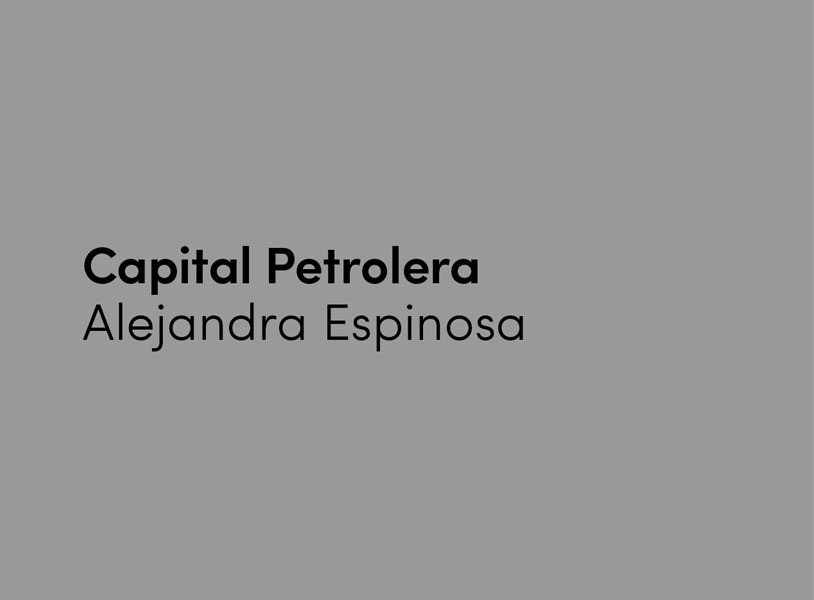https://urbannext.net/capital-petrolera/
| Capital Petrolera https://urbannext.net/capital-petrolera/ |

Categories: Alejandra Espinosa, Energy and sustainability, Essay, No Density, Politics and economics, Urban Paradigms
There is always a line or, better to say, infinite lines between the spaces we aspire to inhabit and those existing within the actual realm of possibility. Sour Lake, or Lago Agrio in Spanish, is an Ecuadorian city that challenges western and modern conceptions of an ideal city. Emerging in the center of the Amazonian region, Sour Lake’s aesthetics and its architecture perspire oil: buildings, streets, stores and all the brick and mortar composing its urban dynamic are influenced by oil resources exploitation. Altogether, as the city grew, it came to be defined by an “unfinished” aesthetic that puts into discussion the relationship between urban imaginaries and their realization.
Lago Agrio was originally founded as a base camp of the American oil company Texaco Inc. (now Chevron), which began exploring the Amazon region during the 1960s. Echoing the excitement and burning ambition of the Spanish colonizers when gold was discovered in South American lands, the discovery of oil was linked for many with the promise of a wealthy future. Settlers (known as colonos) began to arrive from different parts of the country, looking for job opportunities and a new life. Even the name “Lago Agrio” comes from one of the first oil wells drilled by Texaco, and nowadays the city is known as capital petrolera (capital of petroleum).
In the capital of petroleum, the presence of the oil industry, appears as an expansive spiderweb alongside the structures forming the urban landscape. To begin with, oil companies’ offices and camps are located at the city center, where even several private businesses and shops bear names that connote the resource – such as the “Hotel Oro Negro” , invoking the cliché comparison of petroleum to the precious metal. The main bus company is also called “Petrolera” and, as a metaphor of flammable oil, its line traverses the region’s tumultuous roads, circulating unpaved tracks leading to surrounding villages and the entrance of the Amazonian forest. Moreover, in 2015, the Museum of Energy – known as the Museum of Petroleum – was inaugurated in the city. One of its exhibition pieces is the first oil barrel, symbolizing and commemorating the first petroleum drilling realized in the area. The object appears as floating in mid-air in one of the main rooms of the museum. By not touching the ground, the barrel is as such imbued with a mystical allure, reaffirming the seemingly magical and supernatural qualities that historically and locally have been attributed to oil.
But images of petroleum extraction are also to be found in paintings and murals decorating shops and public spaces. A mural at a shopping center depicts an oil tower at the center of an Amazonian landscape, abundantly spilling oil drops into a lake. Oil exploitation is portrayed here as an environmentally friendly activity: the black liquid is poured into the river without damaging the harmony or equilibrium of the ecosystem. The importance of petroleum for Lago Agrio thus becomes explicit; through these manifestations, outsiders realize that oil is the pillar element of the city.
In sharp contrast to the promises of prosperity linked with oil extraction though, today it is estimated that more than 80% of the population in the Lago Agrio urban region live below the poverty line. Reflecting this condition, the city has grown in a chaotic and unplanned manner, with diverse, non-uniform styles of construction. The urban core is dispersed with half-built or under renovation buildings mainly made of concrete. The superposition of semi-finished architectural elements, such as bear concrete columns to be used for a future extension on top of an already completed and livable part of a building, are distinctive features.
This particular aesthetics can be perceived, for example, when looking at “El éxito” store. The facade of the building is colorful, kind of complete, but at the same time the base of the future second floor seems to manifest a desire for vertical expansion. In addition, the sidewall, made of grey cement plinths, remains unplastered – as if it were less important than the facade, despite being in plain sight – waiting to be covered by an adjacent building in the future. As such, in its incompleteness, this building emerges as a paradox from an architectural perspective; somewhat oddly, it is not as successful as the store’s name might claim.
In her work “On the Unfinished in Architecture,”Ingrid Gjermanstad discusses the following question: “What is the unfinished and how is it expressed in architecture? Is it an attitude, a statement, a phenomenon, a style, a given or a result?” As she explains, a philosophical reading of the term unfinished “implies a distinction between conception and realization, an inability to reproduce the idea into form.” The unfinished from this perspective serves as a link to the world of ideas, since “the unfinished work traces an impression of a form or idea, which then can be completed and interpreted only by our own intellect or imagination.”
It is perhaps then pertinent to also evoke another question posed by Gjermanstad in her discussion of this topic: “a building is unfinished according to whom or what?” Following this, why is unfinished architecture so predominant in Lago Agrio? Beyond the economic and political factors that explain its current urban organization and constructions, the strong presence of the oil industry in the city has influenced this particular aesthetic. The promises of richness and prosperity funded the first pillars of the city and this aspiration has trespassed into the natural and built environment. The unfinished constructions in Lago Agrio might be serving a symbolic role detached from architectural form and programmatic function. Allegorically, the “incomplete” buildings may reflect the hope for upcoming better days. The unfinished speaks of a desired landscape; it is a visual representation of the inhabitants’ desire to transcend the present, looking forward to a promising future that may or may not arrive.
| ISSN : 2575-5374 |